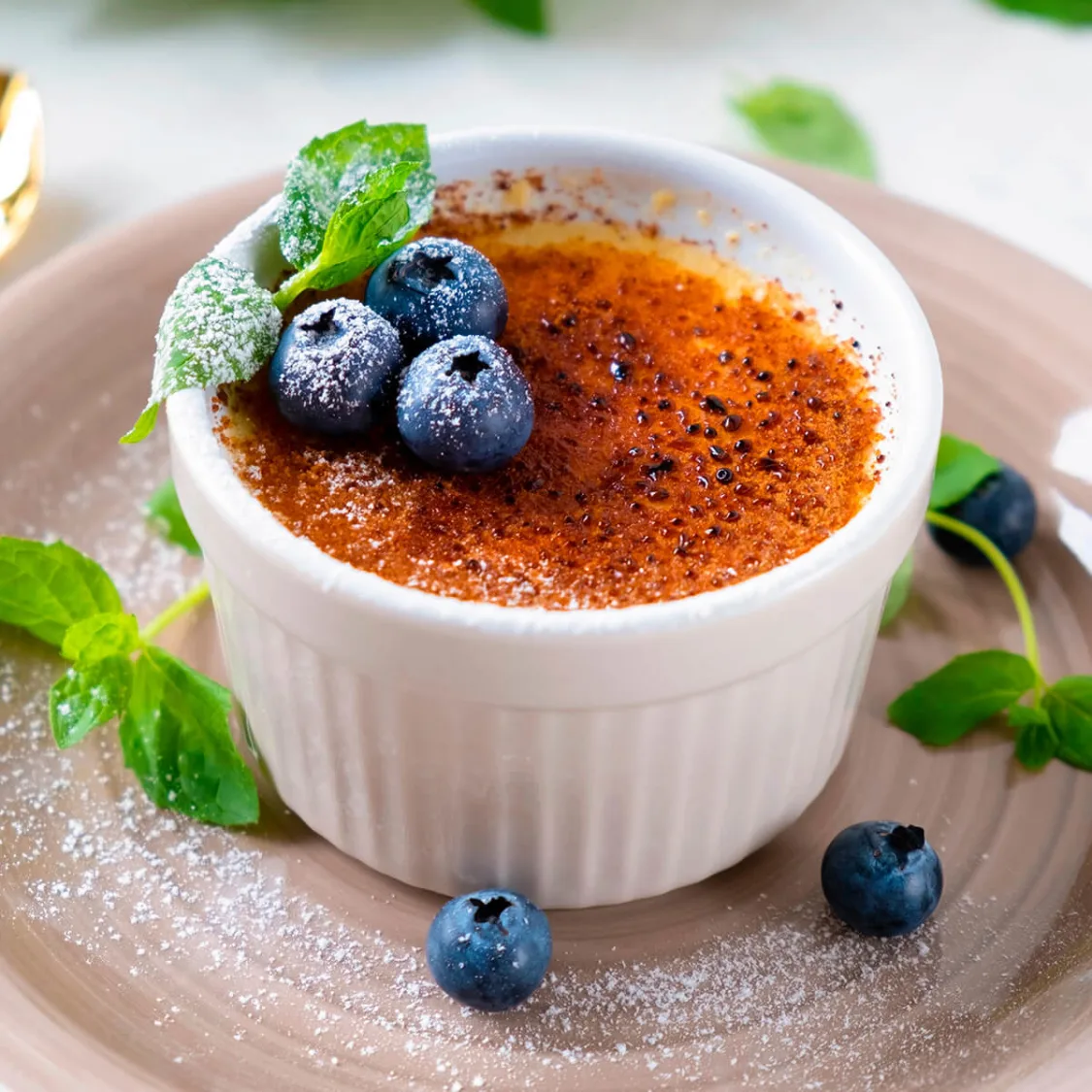
Creme Brulee
Rich vanilla custard topped with caramelized sugar creating a crispy shell.
Ingredients
- •Heavy cream
- •Vanilla beans
- •Egg yolks
- •Sugar
- •Salt
Instructions
Make Custard
Infuse cream with vanilla, mix with egg yolks
Bake
Cook in water bath until set
Caramelize
Top with sugar and torch until crispy
Crème brûlée, meaning "burnt cream" in French, is a luxurious dessert that features a silky smooth vanilla custard base topped with a layer of caramelized sugar that cracks satisfyingly when tapped with a spoon.
This elegant dessert's origins are debated, with both France and England claiming its invention. While the earliest known recipe appeared in a 1691 French cookbook, similar dishes existed in England during the same period. Regardless of its origins, crème brûlée became a staple of French haute cuisine during the 19th century.
The preparation of crème brûlée is a delicate process that begins with infusing heavy cream with real vanilla beans. This aromatic cream is then carefully combined with egg yolks and sugar to create a custard base. The mixture is baked in a water bath at a low temperature until it achieves the perfect trembling consistency - firm enough to hold its shape but still creamy.
While the classic vanilla version remains the most popular, modern variations include flavors such as lavender, chocolate, coffee, or citrus. Some chefs experiment with different toppings, using brown sugar or even flavored sugars for the caramelized crust. However, purists insist that the traditional version, with its pure vanilla flavor and simple caramelized white sugar top, is unbeatable.
In French restaurants, crème brûlée is typically served chilled, with the sugar topping caramelized just moments before serving to ensure the perfect contrast between the cool, creamy custard and the warm, crispy top. It's often accompanied by fresh berries or a small cookie on the side.
While undeniably delicious, crème brûlée is quite rich in calories and saturated fat due to the heavy cream and egg yolks. Those with lactose intolerance or egg allergies should avoid this dessert. However, the dish is naturally gluten-free, making it a suitable choice for those with celiac disease or gluten sensitivity. The portion size is typically modest, allowing diners to indulge in this luxurious dessert without overwhelming guilt.
